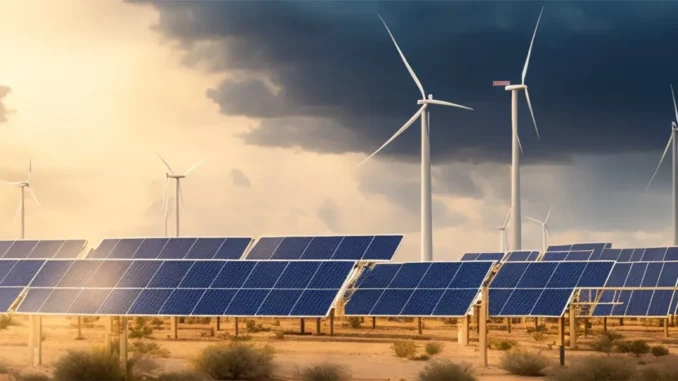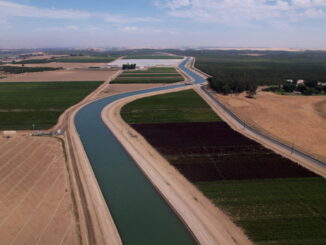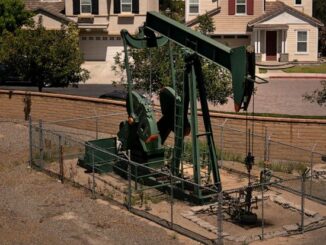
It is not a question as to whether there is enough energy available from the sun or wind or waves or whatever, it is a question of what is needed for the underlying engineering — the batteries, the wind farms, the solar plants, etc.
Acouple of months ago I was sent a presentation by a mild-mannered scientist by the name of Dr Simon Michaux working for Geological Survey Finland. The presentation was quite dense with tables, charts and graphs, but it was clear and concise enough to be able to understand the main points. It was presented as a webinar; the audience was mainly other professional scientists. It was entirely non-political, non-ideological and with little in the way of editorial or opinion.
The entire presentation was pinned on the following question: What quantity of minerals will be required by the alternative energy industry to replace fossil fuels before they begin to run out around 2050? This is the generally agreed date when global oil starts approaching the bottom of the barrel (excuse the pun).
The alternative energy technologies from which he drew his source data were solar (all types), wind (onshore and offshore), batteries (multiple types including lithium and hydrogen fuel cells), hydroelectric, geothermal, biomass, nuclear and others. And his demand requirements covered everything from vehicles to maritime vessels, to trains, to planes, to residential and industrial baseload.
The conclusion is that there is no chance that current alternative technologies will be able to do the job. The data were brutal. The minerals required to build the infrastructure and kit for these energy technologies are simply not available under the Earth’s crust or extractable in the quantities required to take on the load of existing fossil fuel ecosystems. It is not a question as to whether there is enough energy available from the sun or wind or waves or whatever, it is a question of what is needed for the underlying engineering — the batteries, the wind farms, the solar plants, etc.
To give one stunning example, the amount of copper required by renewable technologies (if they were to replace fossil fuels by 2050) is six times our current production. This requires us not only to find new sources but also to develop more than 300 new mines in the next 25 years — which is not geologically, economically or logistically feasible. The picture for other critical base minerals required by alternative energy tech (lithium, cobalt, nickel, vanadium, etc) is equally dismal.
Another shocker: more than 500,000 medium-size non-fossil power plants will have to be built to replace the current fossil fuel fleet by 2050. That is 10x the size of the current fleet. Again, not going to happen; the number is simply too big.
I realise that cherry-picking some of the alarming top-line conclusions may be a little disingenuous and, for those concerned about global energy sources and fossil fuels, I urge you to watch the presentation here. And keep in mind that Michaux is not waving the flag for fossil fuels here; he is fully onboard with the global consensus to find energy replacements.
I am not an energy expert and I don’t presume to present Michaux’s word as gospel, but I have not found any real serious pushback against his numbers because his model was built bottom-up from available verified data.
And, as someone who is hyperallergic to ideologically driven environmental misinformation (from both sides of the spectrum — the nothing-to-see-here crowd and the Earth-is-boiling crowd), his presentation brought me up short because it had the ring of truth. It was simply data, well presented. It has in fact been taken very seriously in Finland, where Michaux is part of a government effort to find solutions, and he has now been invited by governments all over the world to present these findings.
The problem is that no one seems to know what to do about it. It turns out that this is the first report that has minerals requirements for alt energy as its central question. No one else has ever done the analysis in any depth.
Are we being misled about a rosy future for renewable energy sources?
Nuclear energy
This led me to look again at nuclear energy, which is the other big basket of fossil fuel competitors. The two options here are, of course, fission (available for more than 60 years) and fusion (where some interesting results were recently seen).
Here another interesting story emerges. In the case of fission, the anti-nuclear movement, which reached an apogee in the 1970s and 1980s, was powerful enough to have stopped the industry in its tracks. R&D came to a screeching halt, nervous politicians voted down funding, many academics trod lightly and, except for the heavyweight incumbents like Areva, Rosatom, General Electric and Mitsubishi, commercial activities dried up. This has left the world with a fleet of ageing nuclear power stations, some of whose designs date back as far as the 1960s.
In retrospect, this activist movement scored a catastrophic own goal and the entire industry has been stunted as a consequence, with many former anti-nuclear campaigners now shamefacedly admitting mea culpa.
The good news is that the growing pressure to move away from fossil fuels (especially over the last two decades) has seen a great deal of effort expended to build lower-cost, safer, smaller, modular nuclear plants (called SMRs) from numerous companies worldwide, including nimble startups. But nuclear energy is a freighted beast, beset by sclerotic regulation, the worst of politics and the baggage of history. So things move slowly, although determinedly. And, at five to 10 years construction time per plant, it will be expensive and complicated to replace the current baseload fossil fleet.
Finally, there is the fusion story. Fusion has long been the pot of gold at the end of the energy rainbow with the ability to generate abundant inexpensive clean energy. As the sun does, using the same physics. But building a mini-sun in a lab and finding a way to get more energy out than you have to put in, and then to harness it, control it and scale it up, has not only been challenging but we are nowhere near the end of the slog; it is widely snarked that fusion energy has been 30 years away for the last 50 years.
The largest and most expensive of these efforts has been the multinational Iter project in France. Its design was completed in 2001, construction began in 2007 and the first fusion experiments will begin in 2035. And then it has to scale up to public usefulness. So, don’t hold your breath.
A few weeks ago, scientists at the Lawrence Livermore National Laboratory in California reported that they had crossed a critical barrier. They had, for a short time, produced an energy-positive result under constrained laboratory conditions, using lasers. More energy in than out, a Holy Grail of sorts. The media was quick to proclaim that we had finally reached the age of abundance, but a scan of the physics commentary revealed it was peppered with caution. Success under such tightly controlled conditions is a million miles away from an applied solution and there will be many a slip betwixt this early success and the plug on your wall.
If this all sounds a little dystopian, it is. It means we cannot wean ourselves off our addiction to fossil fuels in time to replace them when they are depleted, and alternatives are elusive at best.
What then? Do we assume that smart minds and clever new technologies will find us an escape route in time? Or do we simply shrink our economies to fit reality and deal with the social ructions that this will unleash?



